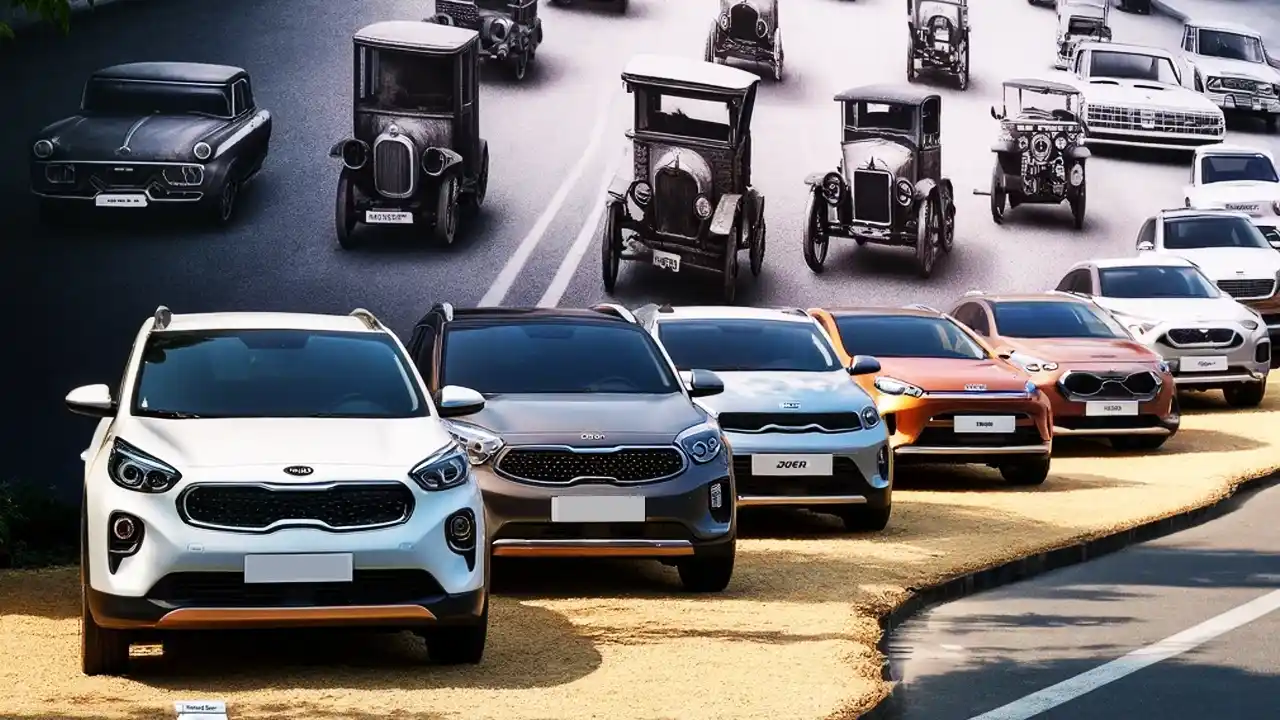Home »
The South Korean multinational automaker KIA Corporation, also simply known as Kia, was founded in Seoul and was formerly known as Kyungsung Precision Industry. Sales of Kia vehicles exceeded 2.8 million in 2019, making it the second-biggest car manufacturer in South Korea, behind Hyundai Motor Company. From Kyungsung Precision Industry’s early days to the Kia of today, Kia has undergone significant transformation. We’ll discuss Kia’s inspiring history in this article, as well as the different turning points that led to the car’s rise to fame.
Early history from1944 to 1974:
Kia’s history began in 1944 with the founding of Kyungsung Precision Industry, the company’s original name. Its initial emphasis was on steel tubing and bicycle parts. In 1951, it even produced the Samchully, Korea’s first indigenous bicycle. After seeing there was a rising need for mobility, Kia quickly entered the motorbike market and teamed up with Honda in 1957.
When Kia and Mazda signed a license agreement in 1962 for Kia to manufacture trucks, the automotive journey officially got underway. This collaboration was successful and opened the door for Kia’s 1974 release of the Brisa, the company’s first passenger vehicle.
Between 1974 and 1997:
In the early years, Kia encountered several difficulties even if the Brisa had a great start. Kia briefly stopped making passenger cars in 1981 and switched its attention to trucks as a result of the industry consolidation that was mandated. Creating popular models like the Pride and Avella, it teamed up with Ford in the late 1980s. Only 26 cars could be produced when Kia began producing compact cars again in 1986.
Kia reunited with Ford in 1987 in an attempt to boost their business and return to the global auto market. Kia was able to come back to the passenger car market in 1992 with the Sephia, its first independently built vehicle, thanks to this relationship, which also contributed vital technological expertise. A financial crisis struck Asia in 1997, hurting numerous businesses, including Kia.
- Audi GT50 Concept: A Loud Reminder of Why Car Enthusiasts Fell in Love With Audi
- Nearly 30% of UK Drivers Believe Car Tax Should Be Based on Mileage — Survey
- Why Planes and Boats Escaped the Luxury Tax But Cars Didn’t
- Australia’s Headlight Confusion: Authorities Warn Drivers After Viral $250 Headlight Rule Goes Wild Online
- 2025 Hyundai Venue Facelift Launched in India – Full Details, Variants, and Price
Between 1997 and 2010:
Asia’s financial crisis had a major effect on the country’s finances, which resulted in bankruptcy in that year. With Hyundai Motor Company’s 1998 acquisition of a majority share in Kia, the company provided a lifeline. Kia had access to Hyundai’s resources and technology through this merger, which proved to be crucial in giving the company financial stability. Kia saw an incredible transformation while being led by Hyundai. As part of a plan devised in 2005, Kia intended to gain market share in Europe. Based on the Hyundai i20 chassis, which is a city car that is taller, stiffer, and more difficult to drive than the i20, the Kia Soul was made available for purchase in 2008 and 2009. The midsize vehicle Kia debuted in 2010 and enjoyed great popularity in the US market was called the Optima.
Recent History:
Kia has been increasing the number of automobiles in its range and raising the standard of its vehicles in recent years. Pope Francis selected a Kia as his preferred mode of transportation while visiting South Korea in 2014, bringing the automaker widespread recognition. In just one month in 2017, an incredible 238,222 Kia automobiles were sold worldwide. Along with this, the firm has concentrated on creating hybrid and electric cars, like the Niro and Soul EV. Kia declared in 2021 that it would be rebranding and changing its name to “KIA Corporation” to better represent its development as a provider of global mobility solutions.
Conclusion:
Since its beginnings as a producer of bicycle parts, Kia has advanced significantly. With models like the K5, Sorento, Sportage, Cerato, and Telluride, it achieved global recognition despite all the obstacles faced. All of these lovely cars are renowned for their dependability, toughness, comfort, driveability, and safety. Kia has achieved international success through alliances, purchases, and an emphasis on design and quality. Kia will remain a significant force in the automotive market for many years to come as the firm develops new models and keeps evolving.
READ MORE :
- All About Aston Martin Cars
- Audi e tron Review
- Bently Continental GT price in India
- BMW X1 Price in India
- Brezza 2022 Launch date in India
- Why Bugatti Is So Expensive?
- Best car dealers in Dubai
- Concorde Motors Kochi
- Honda Showroom Kochi
- Indus Motors Thevara
- KIA DEALERS IN PUNE
- Lamborgini Showroom in India
- Nippon Toyota Kalamassery
- Rolls Royce Showroom in India
- Sai Service Pathadipalam
- Top 10 Car Showrooms Kottayam,
- Top 5 Car Showrooms Trivandrum
- BREZZA 2022 vs TATA NEXON
- Citroen C3 price in India
- 2021 Chevrolet corvette vs Mustang Shelby GT50
- Is Mercedes-Benz better than BMW?
- EcoSport Price in Kerala
- Upcoming Ford cars in India –
- Alcazar
- Cars price in India
- Hyundai Creta
- i20 Price in Kerala on-road
- venue price in India
- KIA Carens price in India on road
- Carnival 2021 India
- KIA Cars on road price in India
- seltos price in Kerala
- Kia sonet price in Kerala
- Landrover Range rover Evoque review
- Mahindra Bolero Neo
